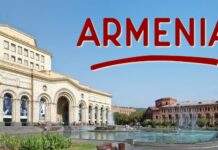WHAT IS ISLAMIC HISTORY & CULTURE ? CONTENTS are; Pre-Islamic Near East: An Overview, The Dawn of Islam: The Prophetic Age (570-632), The Pious Caliphate (632-660), Political System of Islam under the Prophet (PBUH) and the Pious Caliphate, Institutional Development of the Muslim Civilization: The Early Phase (622-660), and Part II …
CONTENTS
Table of Contents
(WHAT IS ISLAMIC HISTORY & CULTURE ?ACCORDING TO FPSC)
Part –I (Marks 50)
I. Pre-Islamic Near East: An Overview
- Political, Social, Cultural, Religious and Economic Conditions in the Near East countries
- Arabia before the beginning of Islam
II. The Dawn of Islam: The Prophetic Age (570-632)
- The Life story of the Prophet Muhammad (PBUH):
- A Chronology of the Major Occasions in his Life
- Prophet Muhammad (PBUH) as a Motivator (Daa’i), Major purposes of his crucial
- Prophet Muhammad (PBUH) as a Military Leader/Strategist
- Prophet Muhammad (PBUH) as a Political Leader/Head of the State
III. The Pious Caliphate (632-660)
- Caliph Abu Bakr (632-34): Apostasy Wars and Consolidation of Islam
- Caliph Umar b.Khattab (634-44): Establishment of Administrative System
- Development of the Muslim Empire
- Caliph Uthman b.Affan (644-56): Problems and Issues in the Muslim Community
- Caliph Ali b.Talib (656-660): Rise of FactionalismSurrender of Imam Hasan and Establishment of Umayyad Dynasty (660)
IV. Political System of Islam under the Prophet (PBUH) and the Pious Caliphate
- Nature of Islamic State
- Type of the Government
- Elements of the Islamic State
- Sway of God
- Caliphate or Vicegerency of Man
- Arrangement of Caliph
- Shura or the Consultative Body and its Role
V. Institutional Development of the Muslim Civilization: The Early Phase (622-660)
- Advancement of Law and Judiciary in Early Islam
- Organization and State Conduct
- Resistance in Early Islam
- Instructive System
- Spread of Islam
- Monetary Administration
- Legacy and Culture
VI. The Umayyads in Power (660-749)
- Political History of the Umayyad Dynasty
- Statecraft and Administration under the Umayyads
- Society and the Development of Arabic Literature.
- Social Achievements
Public Administration Part –II (Marks 50)
I. The Abbasids of Baghdad (749-1258)
- The Abbasid Revolution and the Establishment of the Abbasid Dynasty
- Authoritative Structure under the Abbasids
- Improvement of Scientific Knowledge under the Abbasids
- Muslim Philosophy under the Abbasids Social Achievements
II. Spain under the Muslim Rule
- Spain under the standard of the Arabs and Moors (711-1492)
- Political Fragmentation and the Fall of Granada (1492)
- Muslim Contribution in the Realm of Culture, Arts and Architecture
III. The Crusades against Islam
- Significant Encounters and Actors (1092-1228)
- Effect of the Crusades on Muslim-Christian Relations
IV. The Ottoman Empire
- Rise and Fall of the Ottoman Turks (1299-1923)
- State, Society, and Economy under the Ottomans
- Treatment with the Religious Minorities Commitment towards Culture, Arts and Architecture
V. Sufism as an Institution of the Muslim Society
- Inception and Development of Sufism
- Commitment of the Sufis to the Muslim
- CivilizationRelationship of the Sufis with the State and Political Authorities.
- A Critical View of Sufism…………..





















Профессиональный сервисный центр по ремонту бытовой техники с выездом на дом.
Мы предлагаем:ремонт бытовой техники в мск
Наши мастера оперативно устранят неисправности вашего устройства в сервисе или с выездом на дом!
продать аккаунт магазин аккаунтов
платформа для покупки аккаунтов маркетплейс для реселлеров
продать аккаунт платформа для покупки аккаунтов
покупка аккаунтов маркетплейс аккаунтов соцсетей
купить аккаунт купить аккаунт
продажа аккаунтов https://birzha-accauntov.ru/
перепродажа аккаунтов маркетплейс для реселлеров
магазин аккаунтов социальных сетей гарантия при продаже аккаунтов
продажа аккаунтов соцсетей https://magazin-akkauntov-online.ru
биржа аккаунтов https://ploshadka-prodazha-akkauntov.ru/
купить аккаунт покупка аккаунтов
заработок на аккаунтах аккаунты с балансом
площадка для продажи аккаунтов профиль с подписчиками
Account Trading Ready-Made Accounts for Sale
Account Market Social media account marketplace
Find Accounts for Sale Account trading platform
Website for Selling Accounts https://buyaccountsmarketplace.com/
Find Accounts for Sale Account Market
Buy and Sell Accounts Account Store
Sell Pre-made Account Buy accounts
Account Selling Platform Buy Account
Account exchange Website for Buying Accounts
Account Selling Platform Account Buying Platform
purchase ready-made accounts account trading service
buy and sell accounts sell account
account trading platform account exchange
accounts market online account store
social media account marketplace accounts marketplace
account sale account selling platform
secure account purchasing platform account trading platform
account selling service ready-made accounts for sale
account trading platform account trading platform
buy and sell accounts secure account purchasing platform
account trading database of accounts for sale
account trading service account trading service
buy and sell accounts ready-made accounts for sale
website for buying accounts marketplace for ready-made accounts
account trading service account purchase
database of accounts for sale sell accounts
account buying service account market
account trading platform find accounts for sale
ready-made accounts for sale website for selling accounts
sell account purchase ready-made accounts
secure account sales website for buying accounts
online account store accounts marketplace
sell account https://sale-social-accounts.org
buy account account exchange
online account store website for selling accounts
account exchange service account trading platform
verified accounts for sale secure account sales
accounts for sale profitable account sales
website for selling accounts https://accounts-offer.org
account sale https://accounts-marketplace.xyz/
sell accounts account market
account trading service https://social-accounts-marketplaces.live
marketplace for ready-made accounts https://accounts-marketplace.live
account exchange account marketplace
account trading platform buy-accounts.space
account trading accounts marketplace
secure account purchasing platform accounts marketplace
gaming account marketplace accounts market
account market https://social-accounts-marketplace.live/
account selling platform https://accounts-marketplace-best.pro
покупка аккаунтов купить аккаунт
продать аккаунт rynok-akkauntov.top
биржа аккаунтов kupit-akkaunt.xyz
магазин аккаунтов https://akkaunt-magazin.online
продать аккаунт https://akkaunty-market.live
маркетплейс аккаунтов https://kupit-akkaunty-market.xyz
маркетплейс аккаунтов https://akkaunty-optom.live/
купить аккаунт https://online-akkaunty-magazin.xyz/
магазин аккаунтов магазины аккаунтов
биржа аккаунтов https://kupit-akkaunt.online/
fb accounts for sale fb account for sale
buy facebook old accounts facebook ad accounts for sale
fb accounts for sale buy aged facebook ads account
buy facebook account for ads buy facebook ads account
facebook ad account for sale buy aged facebook ads accounts
facebook ads account buy buy facebook profile
buy facebook profiles buy facebook ad account
Этот информационный обзор станет отличным путеводителем по актуальным темам, объединяющим важные факты и мнения экспертов. Мы исследуем ключевые идеи и представляем их в доступной форме для более глубокого понимания. Читайте, чтобы оставаться в курсе событий!
Получить дополнительную информацию – https://medalkoblog.ru/
buy fb ad account buy a facebook ad account
facebook accounts to buy https://ad-accounts-for-sale.work
buy google ads account buy google ads
buy google ad threshold account https://buy-ads-accounts.click
buy old facebook account for ads buying facebook ad account
buy adwords account https://ads-account-for-sale.top
buy google ads accounts https://ads-account-buy.work
sell google ads account https://buy-ads-invoice-account.top/
google ads account seller https://buy-account-ads.work/
buy google ad threshold account buy adwords account
buy facebook bm account https://buy-business-manager.org/
buy google adwords accounts https://buy-verified-ads-account.work
buy bm facebook buy-verified-business-manager-account.org
facebook business manager for sale https://buy-verified-business-manager.org
buy facebook bm https://buy-business-manager-acc.org
buy facebook verified business account https://buy-business-manager-verified.org
business manager for sale https://verified-business-manager-for-sale.org/
buy tiktok business account https://buy-tiktok-ads-account.org
tiktok agency account for sale https://tiktok-agency-account-for-sale.org
buy tiktok ad account https://buy-tiktok-ads-accounts.org
buy tiktok ad account https://buy-tiktok-business-account.org
Предлагаем услуги профессиональных инженеров офицальной мастерской.
Еслли вы искали ремонт холодильников gorenje цены, можете посмотреть на сайте: ремонт холодильников gorenje сервис
Наши мастера оперативно устранят неисправности вашего устройства в сервисе или с выездом на дом!
amoxil cheap – https://combamoxi.com/ cheap amoxicillin generic
cheap diflucan 200mg – https://gpdifluca.com/ fluconazole 200mg pills
generic cenforce – https://cenforcers.com/ cenforce 50mg tablet
cialis coupon walgreens – fast ciltad cialis 20mg tablets
buy fb ads account account sale online account store
buy facebook account for ads account market buy pre-made account
what does cialis treat – cialis after prostate surgery cialis free trial phone number
sildenafil tablets 100mg – https://strongvpls.com/# viagra 100mg cost
Greetings! Jolly productive par‘nesis within this article! It’s the little changes which will obtain the largest changes. Thanks a portion quest of sharing! gabapentin 100mg pill
This is the big-hearted of scribble literary works I rightly appreciate. https://gnolvade.com/
The sagacity in this piece is exceptional. https://ursxdol.com/get-cialis-professional/
More articles like this would frame the blogosphere richer. https://prohnrg.com/product/priligy-dapoxetine-pills/
Thanks for sharing. It’s top quality. https://aranitidine.com/fr/en_ligne_kamagra/
This is the stripe of topic I have reading. https://ondactone.com/spironolactone/
More articles like this would remedy the blogosphere richer.
https://doxycyclinege.com/pro/warfarin/
This website exceedingly has all of the bumf and facts I needed about this case and didn’t comprehend who to ask. http://clients1.google.com.vc/url?q=https://hackmd.io/@adip/S1nI1FQ_xe
This is a theme which is in to my heart… Myriad thanks! Exactly where can I lay one’s hands on the contact details in the course of questions? http://www.orlandogamers.org/forum/member.php?action=profile&uid=28883
order forxiga 10 mg sale – janozin.com dapagliflozin 10 mg tablet
orlistat pills – this xenical brand
Устал искать информацию по разным сайтам? Есть решение – универсальная платформа!
Особенно рекомендую статью: Английский для IT-специалистов
Всё в одном месте: новости, статьи, справочники, калькуляторы, объявления. Очень удобно и экономит массу времени!
I am in truth happy to glance at this blog posts which consists of tons of of use facts, thanks object of providing such data. https://www.forum-joyingauto.com/member.php?action=profile&uid=49539
Профессиональный сервисный центр по ремонту техники.
Мы предлагаем: Ремонт кондиционеров Timberk в Йошкар-Оле
Наши мастера оперативно устранят неисправности вашего устройства в сервисе или с выездом на дом!
You can shelter yourself and your stock by being cautious when buying prescription online. Some pharmacopoeia websites function legally and put forward convenience, solitariness, cost savings and safeguards as a replacement for purchasing medicines. buy in TerbinaPharmacy https://terbinafines.com/product/cipro.html cipro
This website really has all of the low-down and facts I needed about this participant and didn’t know who to ask. TerbinaPharmacy
You can shelter yourself and your stock by being alert when buying pharmaceutical online. Some pharmacy websites control legally and offer convenience, solitariness, rate savings and safeguards to purchasing medicines. http://playbigbassrm.com/es/
This website positively has all of the low-down and facts I needed adjacent to this case and didn’t comprehend who to ask.
alihidaer2313 – I enjoyed browsing, the feel is straightforward and uncluttered.
newstestingtoda – For now it feels experimental, not fully formed or stable.
newstestingtoda – I hope they add more substance; the name suggests news or testing.